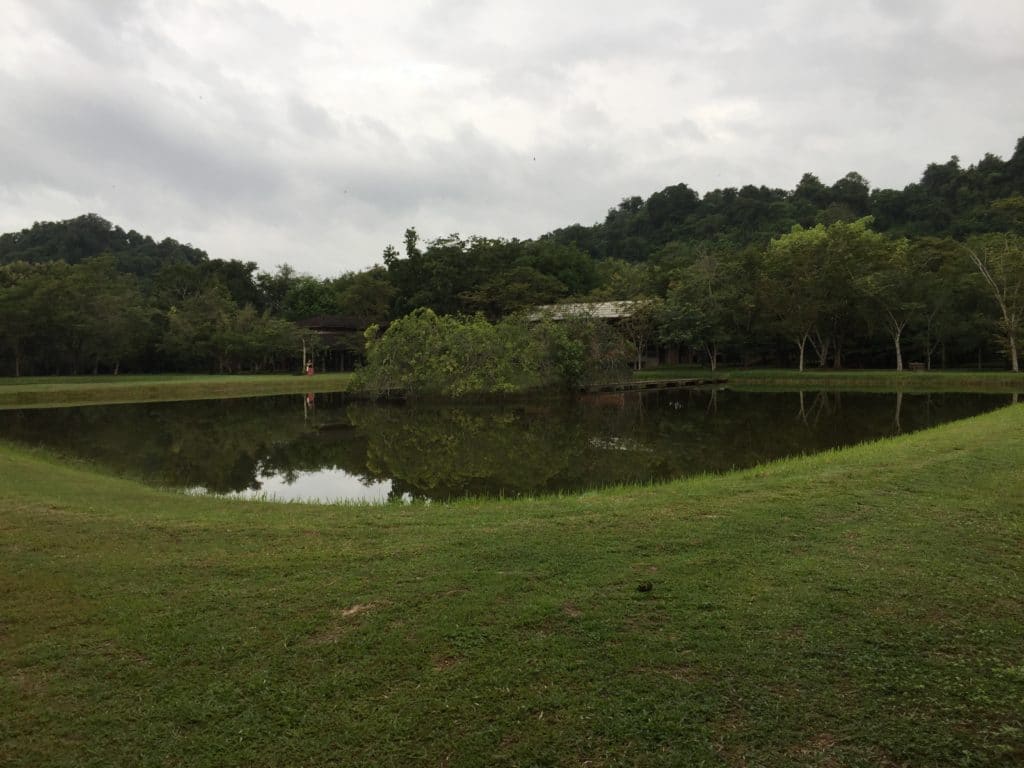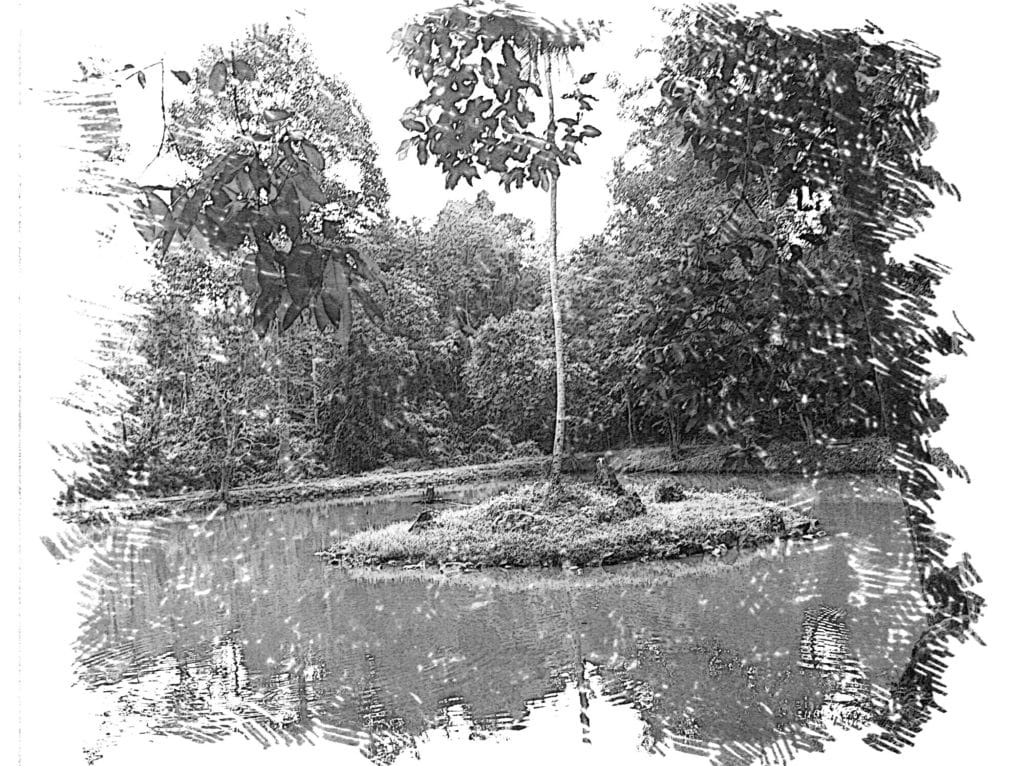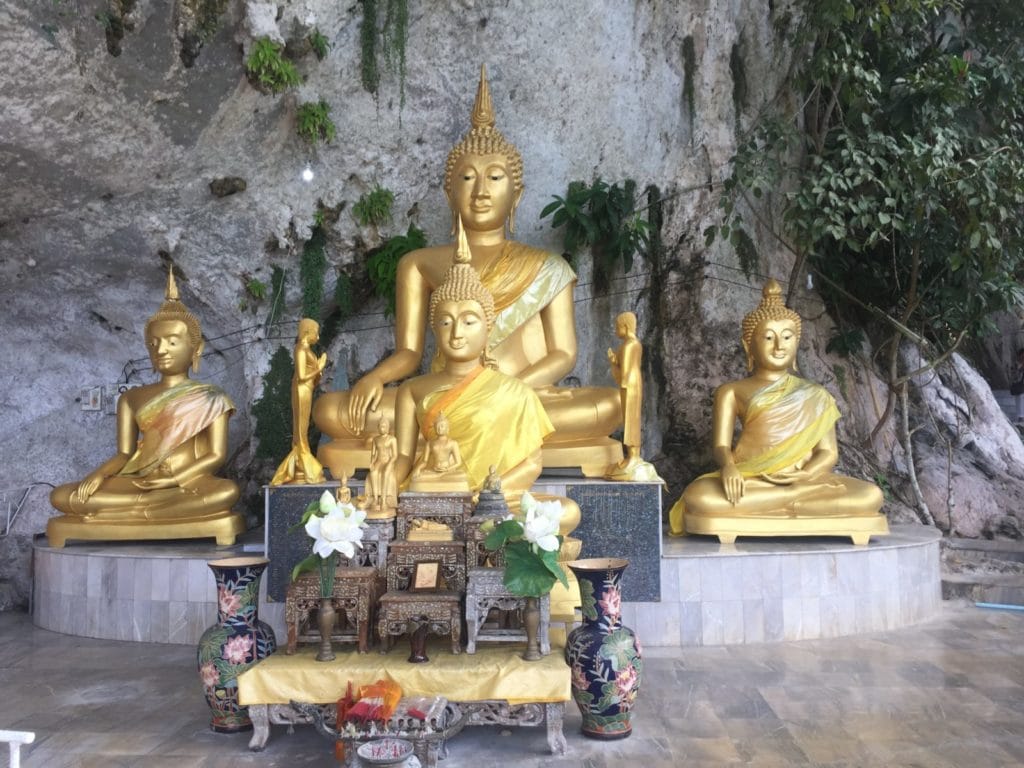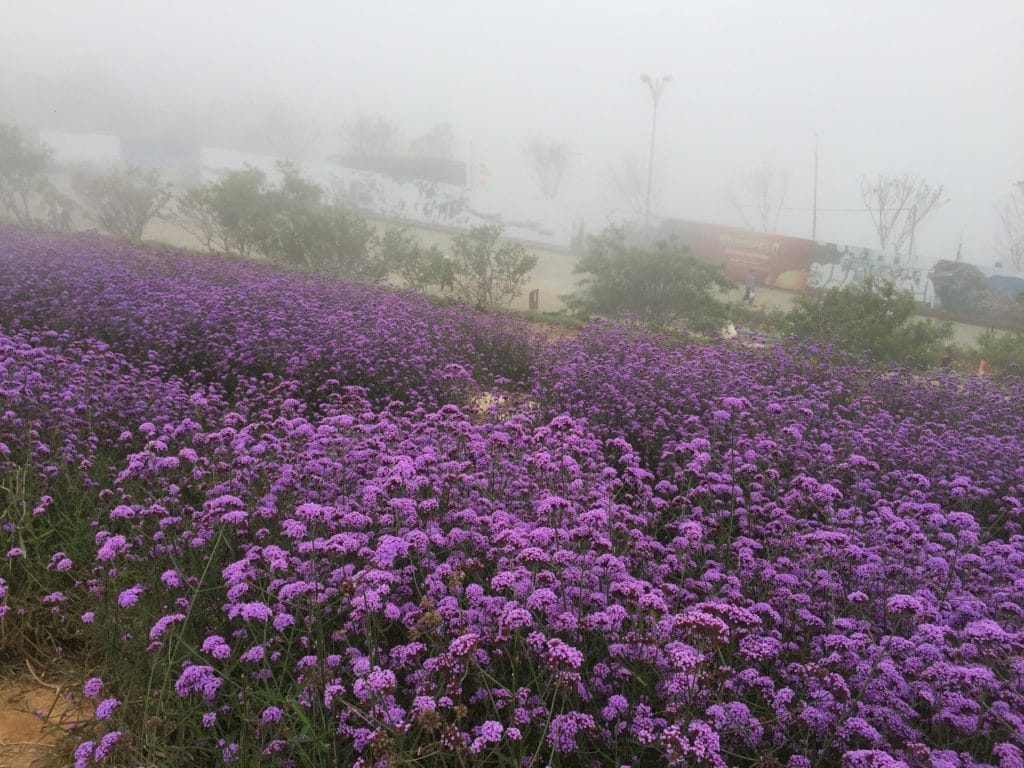Suan Mokkh meditation retreat covers a large area of forests, meadows, three small lakes, five large meditation halls, and several small spaces for isolation or individual talks with the monks. Each object or part of the landscape was has a special symbolism that has origins in Buddhist teachings. On the property, there is a Bodhi tree, under which I sat. (Bodhi tree is a tree under which Buddha sat when he experienced enlightenment).
The three lakes are located at the back of the retreat property and are not the same. The left one has an irregular shape, the middle one has a small island inside, and the third one is a perfect circle. They are all shaped like they are for a reason. Buddhism has many symbols and metaphors, and the three lakes are not exceptions. They represent the three marks of existence, Anicca (Impermanence), dukkha (unsatisfactoriness), and anatta (non-self).
Ignorance of the three marks of existence is the first step of an endless cycle of suffering. Therefore, overcoming this ignorance leads to an end to that circle and, consequently, to suffering. It is described in the core of Buddhist teaching – The Four Noble Truths. The Noble Eightfold Path is the explanation of how to achieve this ultimate goal.
The origin of all this is the notion that all beings are conditioned by causes, are impermanent and suffering. Not-self means there is no “I,” “me,” or “mine” in either the conditioned or the unconditioned. Only accepting these facts enables you to become free from suffering and reach Nibbana. You can do it in your current life. You do not need to die to become enlightened and free.
The Uneven pond
The first lake in the Suan Mokkh meditation retreat represents impermanence, and it is restless, ever-changing, and non-perfect. The word Aniccaa means impermanence, instability, flux: conditioned things are ever-changing, in ceaseless transformation, and continuously arising, manifesting, and extinguishing. It suggests that all concocted things decay and pass away. It is the first fundamental characteristic of Sankara (the circle of life). Merely seeing anicca by itself, rather than seeing it entirely in all its elements, is nothing extraordinary. To see anicca alone, in an incomplete way that does not include dukkha and anatta, is neither profound nor sufficient to solve our problems. Contemplating impermanence consists of the realization of unsatisfactoriness, not-self, voidness, thusness, and conditionality as well.
The pond with the island
The second lake Recognizes suffering and unsatisfactoriness but has a peaceful center that represents Nibbana. The path to the island leads over an eight-pillar bridge, which means the Noble Eightfold path.
Dukkha is a Pali term that has many meanings. We can translate this as stress, suffering, misery, unsatisfactoriness, pain. Literally, “hard to endure, difficult to bear.” In its limited sense, dukkha is the quality of experience that results when the mind is conditioned into craving, attachment, egoism, and selfishness.

This feeling is in the form of disappointment, dissatisfaction, frustration, agitation, anguish, dis-ease, and despair—from the crudest to the subtlest levels. It is the result of anicca: impermanent things cannot satisfy our wants and desires no matter how hard we try.
The round lake
The third lake celebrates the acceptance of non-self and therefore has a perfectly round shape.
Anatta is not-self, selflessness, non-selfhood: the fact that all things without exception, including Nibbana, are not-self and lack any essence or substance that could properly be called a “self.” This truth does not deny the existence of “things” but denies that they are an owner or controller in any but a relative, conventional sense. Anatta is the third fundamental characteristic of Sankara.
Three marks of existence
All things will change; they’re unstable. All things are unsatisfactory. There’s nothing like that that we can call “mine.”
There are three kinds of desires. The first is sensory desire, finding pleasure in things; in shapes and colors, sounds, smells, tastes, or tactful objects. Then there is a desire to become a desire to be this or that according to what someone wants. The third kind is the desire not to become, the desire not to be this or that. Anyone can notice that wherever there is a desire, there is a feeling. And when we are forced to act at will, we are obliged to suffer again by the action.
If there is to be a Nirvana, freedom from suffering of any kind, there must be an absolute and complete absence of desire.
The way to achieve that is through the Noble Eightfold path, using the practice of mindfulness meditation.
Vipassana – Mindfulness meditation
Mindfulness meditation is a powerful ancient technique that we are using for years, mainly to reduce stress, anxiety, depression and achieve inner peace. The method we use to accept all three marks of existence is Vipassana, the meditation of insight. Vipassana literally means “clear seeing”; to see clearly, distinctly, directly into the true nature of things, into the three marks of existence.
In the Suan Mokkh meditation retreat, we practice Vipassana. It is the practice of mental development for the sake of genuine insight. It is important not to confuse the physical posture, theory, and method of such practices with the actual realization of impermanence, unsatisfactoriness, and not-self.
If you want to know more
If you want to learn more about things I write about, check out my books. See also what the goal of this website is. You can check out my other post about mindfulness and share your thoughts and comments.
If you like this post, please subscribe here, get a free e-book, and get a notification when future posts are published. Also, share with your friends, like, and follow on social media using the buttons below.
Enjoy reading!
Share


